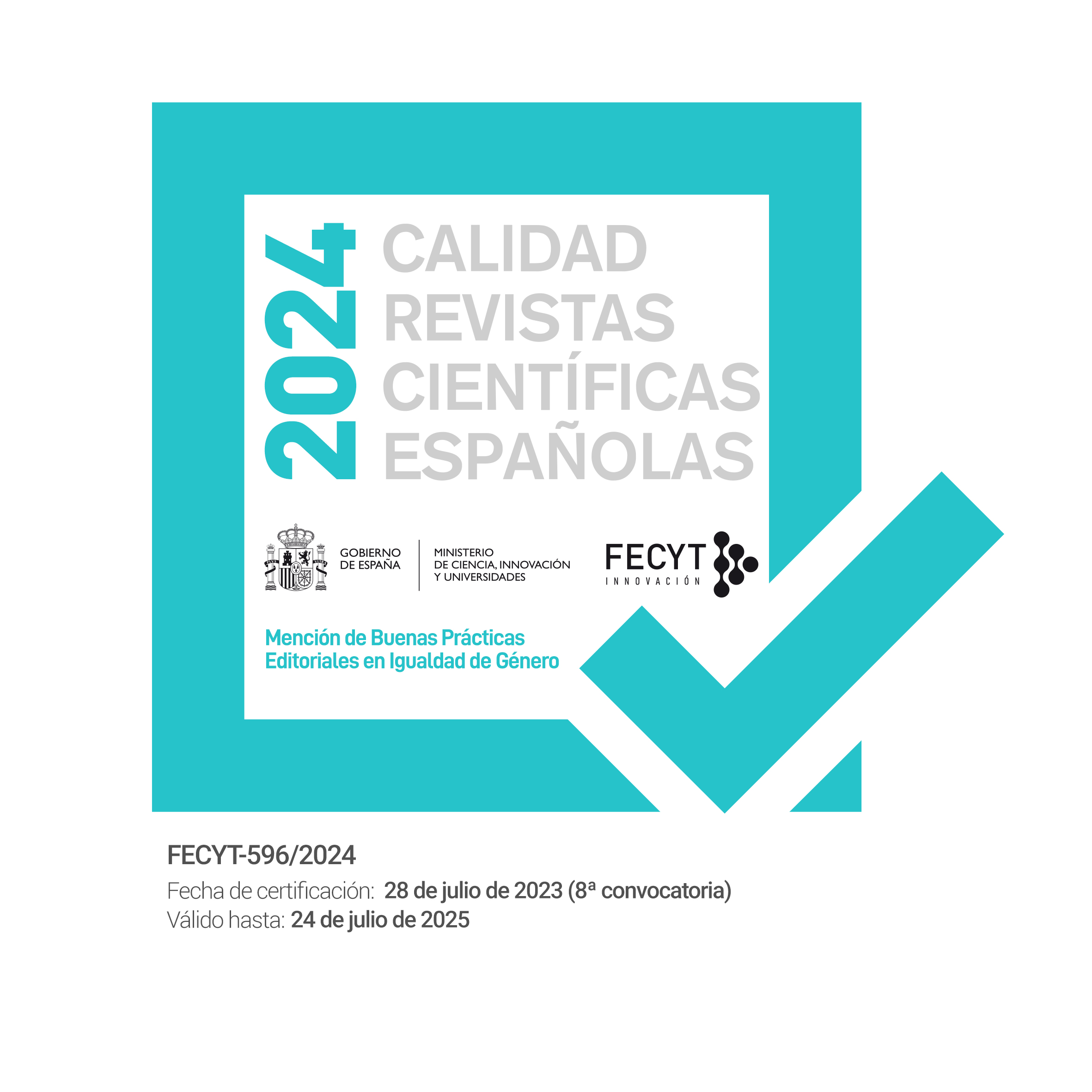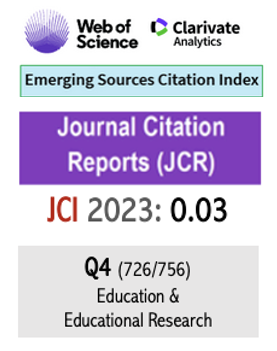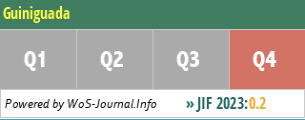Implementation of the CEFR in the rubrics of two main English Certificates: Cambridge FCE and Trinity ISE-II. Implementación del MCER en las rúbricas de dos principales certificados de inglés: Cambridge FCE y Trinity ISE-II
doi.org/10.20420/ElGuiniguada.2021.414
Palabras clave:
inglés como lengua extranjera, MCER, evaluación, rúbricas, Exámenes Oficiales de InglésResumen
The Common European Framework of Reference (CEFR) was developed by the European Council with the intention of providing a comprehensive basis for the creation language syllabi and curriculum guidelines, together with the design of teaching materials, language certificates and instruments of assessment. The CEFR has been implemented in Spain through different education laws and has prompted the introduction of the communicative approach and the use of new instruments of assessment such as rubrics. Nonetheless, almost twenty years after the CEFR was passed, not many researches have been conducted on how the Framework has been implemented. It is from this line where the current research stems as it intends to check how the CEFR has been adapted in the rubrics used for the assessment of the writing skill in two main English Certificates: the Cambridge Assessment English FCE and the Trinity College ISE-II.
El Marco Común Europeo de Referencia (MCER) se desarrolló con el objetivo de promover una base común para la creación de currículos educativos y servir como guía en la elaboración de materiales didácticos, exámenes de certificación e instrumentos de evaluación. El MCER se ha implantado en España a través de diferentes leyes educativas y ha propiciado la introducción del enfoque comunicativo o nuevos instrumentos de evaluación como rúbricas. Sin embargo, casi veinte años después de la aprobación del marco, pocos son los estudios que han revisado de qué manera se ha adaptado el marco. Es aquí donde la presente investigación se sitúa, con el objetivo de comprobar cómo se ha implementado el MCER en las rúbricas para examinar la destreza escrita de dos de los principales certificados de inglés: el Cambridge Assessment English FCE y el Trinity College ISE-II.
Descargas
Citas
Allen, L. K. et al. (2014). L2 Writing Practice: Game enjoyment as a key to engagement. Language Learning and Technology, Vol. 18, No.2, Jun., pp.124-150.
Becker, A. (2016) Student-generated scoring rubrics: Examining their formative value for improving ESL students’s writing performance. Assessing Writing, Jul.
Brooks, G. (2012). Assessment and Academic Writing: A look at the Use of Rubrics in the Second Language Writing Classroom. Kwansei Gakuin University Humanities Review, Vol. 17, pp. 227-240. Recuperado de: core.ac.uk/download/pdf/143638458.pdf
Cambridge English Language Assessment (2016). Cambridge English First Handbook for Teachers for exams from 2016. CambridgeEnglish.org, Recuperado de: www.cambridgeenglish.org/images/167791-cambridge-english-first-handbook.pdf
Council of Europe (2001). Common European Framework of Reference for Languages: Learning, Teaching, Assessment. Cambridge University Press.
Frydrychova, B. (2011). Evaluation Writing in English as a second language. Procedia_Social and Behavioral Sciences, Dec., pp. 390-394.
Hernández Sampieri, R. et al. (2010). Metodología de la Investigación, 5ª Ed. McGraw Hill, ISBN: 978-607-15-0291-9
Laurian, S. & Fitzgerald, C.J. (2013). Effects of using rubrics in a university academic level Romanian literature class. Procedia. Social and Behavioral Sciences, Elsevier, 76, pp. 431-440.
Madrid, D. (2001) Introducción a la investigación en el aula de la lengua extranjera. Metodología de investigación en el área de filología inglesa, editado por María Elena García Sánchez and María Sagrario Salaberri, Universidad de Almería, Secretariado de Publicaciones, 363, pp. 11-45. Recuperado de:
www.ugr.es/~dmadrid/Publicaciones/Introduccion%20investigacion%20aula-Sagrario%20y%20Elena.pdf
Phelan, C. & Wren, J. (2005-2006). Exploring reliability in academic assessment, Iowa: UNI Office of Academic Assessment, University of Northern Iowa, Recuperado de: www.uni.edu/chfasoa/reliabilityandvalidity.htm
Sundeen, T. H. (2014). Intructional rubrics: Effects of presentation on writing quality. Assessing writing, Elselvier, 1st of Apr. 2014, pp. 74-87.
Trinity College London. (2017) Integrated Skills in English (ISE) Guide for Teachers — ISE-II (B2). Trinity College web page, Online edition Jun. Recuperado de: https://www.trinitycollege.com/qualifications/english-language/ISE/ISE-II-B2-resources/ISE-II-B2-Guides
Velasco-Martínez, L. & Tójar, J.C. (2015) Evaluación por competencias en educación superior. Uso y diseño de rúbricas por los docentes universitarios. AIDIPE (Ed.), Investigar con y para la sociedad, Bubok, Vol. 2, pp. 1393-1405, Recuperado de: avanza.uca.es/aidipe2015/libro/volumen2.pdf
Vez, J. M. (2011) La Investigación en Didáctica de las Lenguas Extranjeras. Educatio Siglo XXI, Vol. 29, No.1, pp. 81-108. Recuperado de: digitum.um.es/xmlui/bitstream/10201/27149/1/La%20Investigación%20en%20Didáctica%20de%20las%20Lenguas%20Extranjeras.pdf
Publicado
Cómo citar
Número
Sección
Licencia
El Guiniguada se distribuye en abierto bajo una licencia Creative Commons Reconocimiento–NoComercial–SinObraDerivada 4.0 Internacional. Permite pues que los autores/as retengan, sin restricciones, los derechos de autoría así como los de publicación y difusión (esta última en una web personal o en un repositorio institucional). Igualmente, los artículos pueden ser descargables y compartirse siempre que se reconozca la autoría, que no se realicen cambios y que no se utilicen comercialmente (CC BY-NC-ND). En los números anteriores a 2020 los derechos de autor/a eran transferidos a la Revista, pero desde el Volumen 29 (2020) se aplica la política de derechos de autoría actual.
La Revista proporciona por tanto un acceso abierto inmediato a su contenido basado en el principio de que ofrecer al público un acceso libre a las investigaciones ayuda a un mayor intercambio global de conocimiento, de acuerdo con la definición BOAI de acceso abierto. Los autores/as no pagan por publicar en El Guiniguada.
El destinatario principal de esta publicación es la comunidad científica en general. No obstante, dado el interés social de los temas vinculados con la educación, El Guiniguada es consciente de la previsible proyección general que sus volúmenes puedan tener. Su acceso abierto permite, igualmente, el conocimiento libre y general de su contenido.
Quienes publiquen en esta revista aceptan pues los términos siguientes:
- Conservarán sus derechos de autoría y garantizarán a la revista el derecho de primera publicación de su obra, el cual estará simultáneamente sujeto a la Licencia de reconocimiento de Creative Commons que permite a terceros compartir la obra siempre que se indique su autoría y su primera publicación en esta revista. Asimismo, se indica que no se puede hacer un uso comercial de la obra; tampoco está permitido su uso derivado.
- Podrán adoptar otros acuerdos de licencia no exclusiva de distribución de la versión de la obra publicada (p. ej.: depositarla en un repositorio institucional o publicarla en un volumen monográfico) siempre que se indique la publicación inicial en esta revista.
- Podrán difundir su obra a través de Internet (p. ej.: en archivos telemáticos institucionales o en los perfiles académicos o profesionales de los autores...) antes y durante el proceso de envío, lo cual puede producir intercambios interesantes y aumentar las citas de la obra publicada. (Véase El efecto del acceso abierto).
Asimismo y de acuerdo con la política de acceso abierto BOAI, todo el contenido está disponible gratuitamente sin cargo para el usuario o su institución. Los usuarios pueden leer, descargar, copiar, distribuir, imprimir, buscar o vincular los textos completos de los artículos, o usarlos para cualquier otro propósito legal, sin solicitar permiso previo del equipo editorial o de la autoría.
















